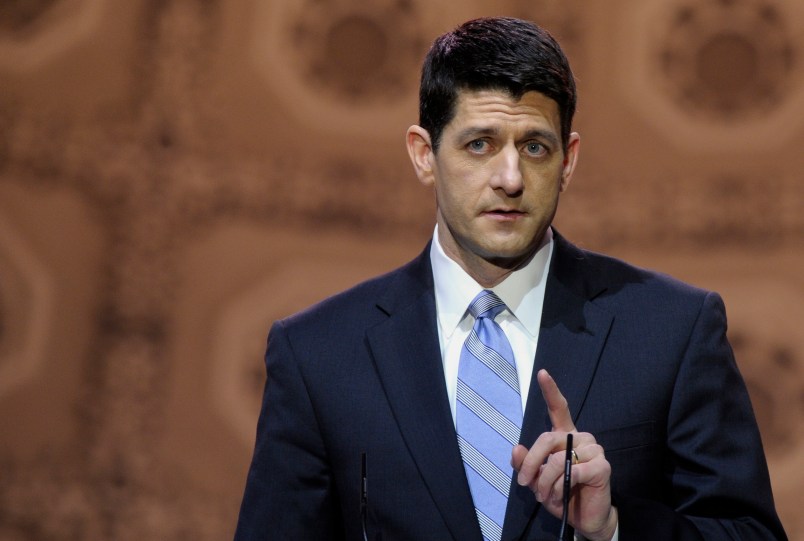Buried in Rep. Paul Ryan’s (R-WI) new budget is a subtle — but deeply consequential — change to his controversial Medicare privatization plan.
His new blueprint eliminates the cap on Medicare spending per beneficiary. Ryan’s budget last year maxed out spending on a given Medicare patient at nominal growth in GDP per capita — which is currently forecast at 3.7 percent — plus 0.5 percentage points. (A previous year’s budget was even lower.) The cap had been in his earlier budget proposals to guarantee long-term savings within the Medicare program, which Ryan said justified the dramatic change.
His so-called premium support plan for Medicare, which takes effect after 10 years, would give seniors a subsidy to buy insurance from a menu of private plans and a government plan. Think Obamacare with a public option. Insurers would submit bids for premiums, and the level of the subsidy would be determined by the average bid in each region. (That, too, is a notable shift: Ryan’s budget last year pegged it to the second-lowest bid.)
The change has significant policy and political implications.
From a policy standpoint, it damages Ryan’s guarantee of long-term savings if health care costs rise over time. That’s less necessary in the short run because health spending growth is projected to be slow in the coming years, before speeding up again in about a decade. The congressman has justified his restructuring of the popular program as necessary to avert a debt crisis.
“Not having the cap could have big implications as well in the long-run if we fail to get health care cost growth under control,” Loren Adler, a health policy expert at the Committee for a Responsible Federal Budget, said in an email.
Politically, the plan is a safer bet without the cap. It insulates Ryan and his Republican colleagues from damaging Democratic attacks that they want to eliminate the Medicare guarantee and leave seniors on the hook if health costs were to grow fast.
“Under the cap formulation in Ryan’s previous budgets,” Adler explained, “beneficiaries would have been liable for increased premiums if Medicare per beneficiary costs rose faster than GDP+0.5% annually to make up the difference, which could have led to beneficiaries paying a higher percentage of Medicare program costs, on average, over time.”
Supporters of Ryan’s “premium support” concept, which has become a standard GOP position, say the competitive bidding process between insurers will drive down costs, give seniors more choice and protect the program. Ryan’s updated plan was based on a September 2013 Congressional Budget Office analysis of premium support without a cap on Medicare spending, which found potential for savings under an average-bid structure.
Ryan’s detractors, which include nearly all Democrats, describe the proposal as a Trojan horse to unravel Medicare. They argue that the single-payer system reduces overhead costs, spends money efficiently and is essential to its success.
The Ryan plan cleared committee on Wednesday night, and is headed for a vote in the Republican-led House. It’s a nonstarter for the Democratic-led Senate and Obama White House. But Ryan and his GOP colleagues are sticking by the ambitious Medicare proposal — and working to make it more politically feasible if they do come to power and attempt to pass it.






